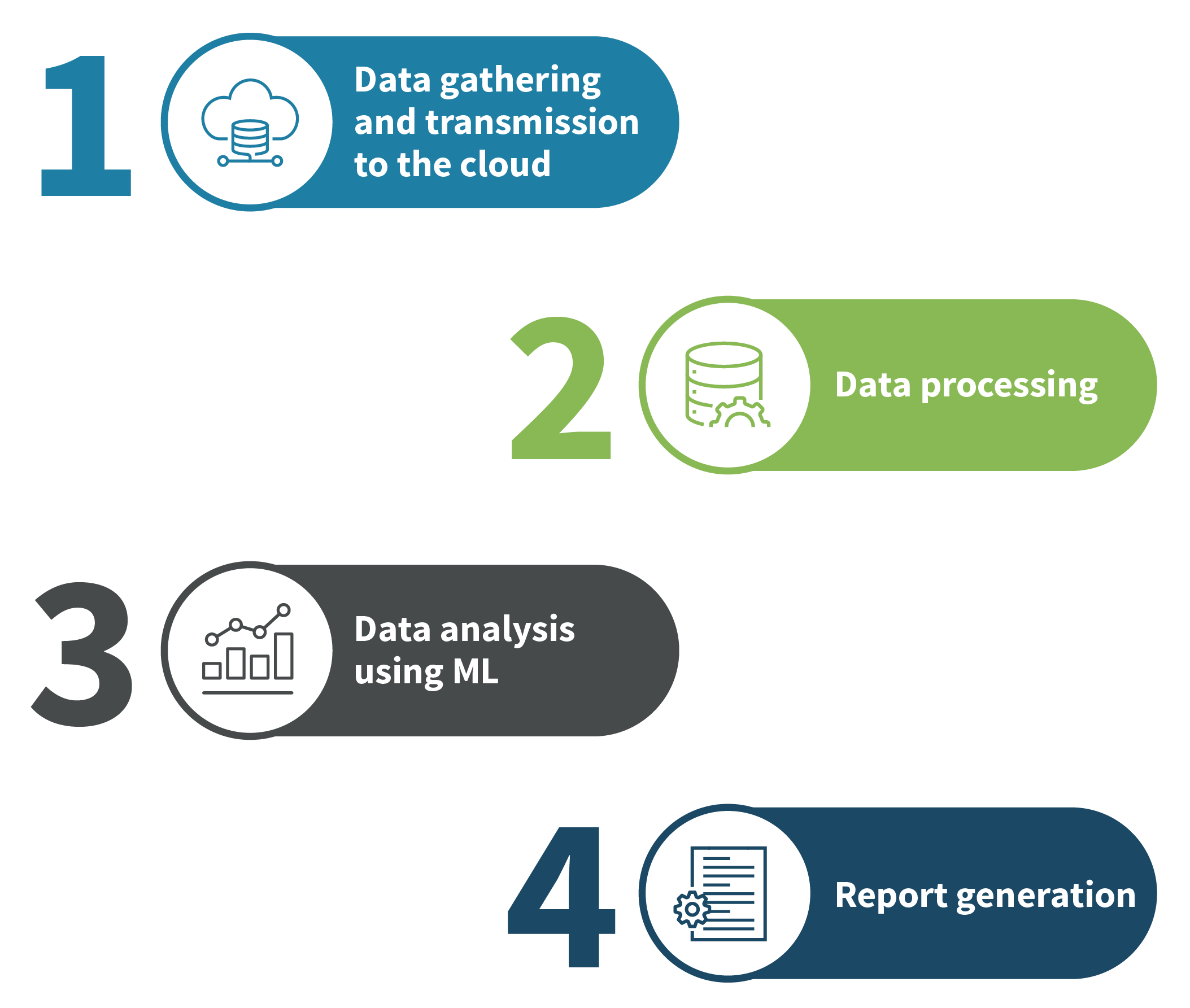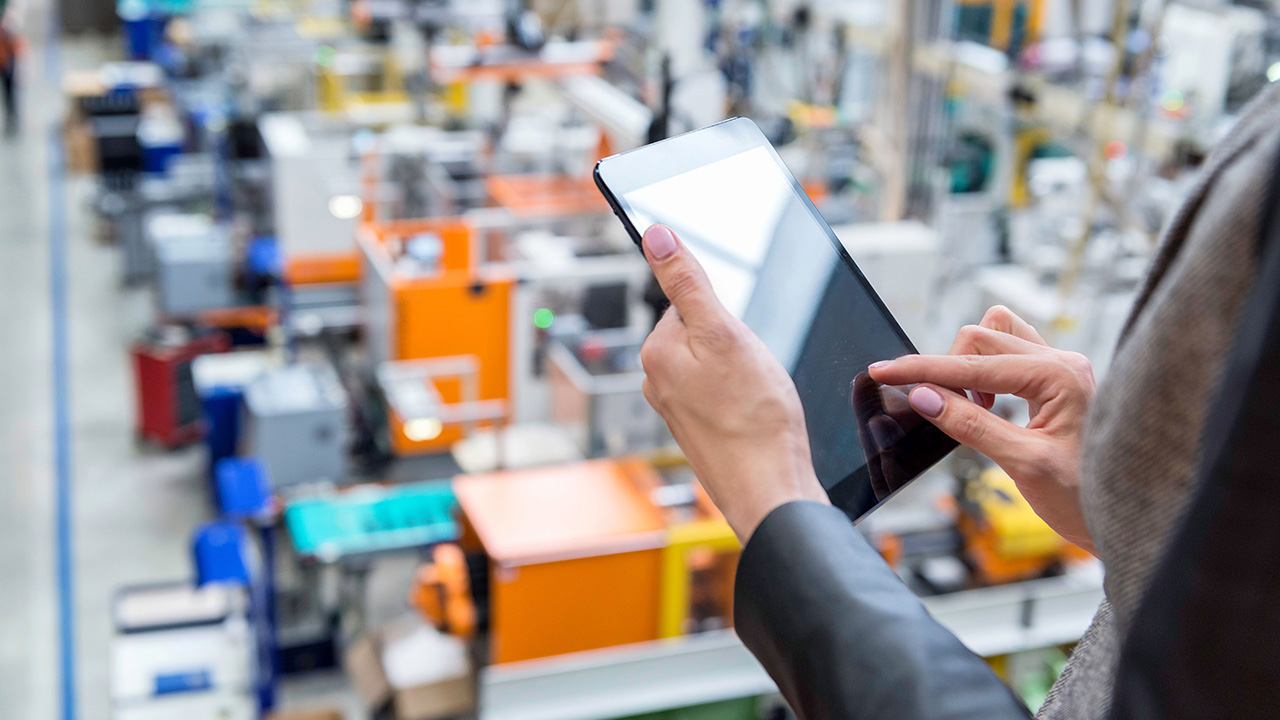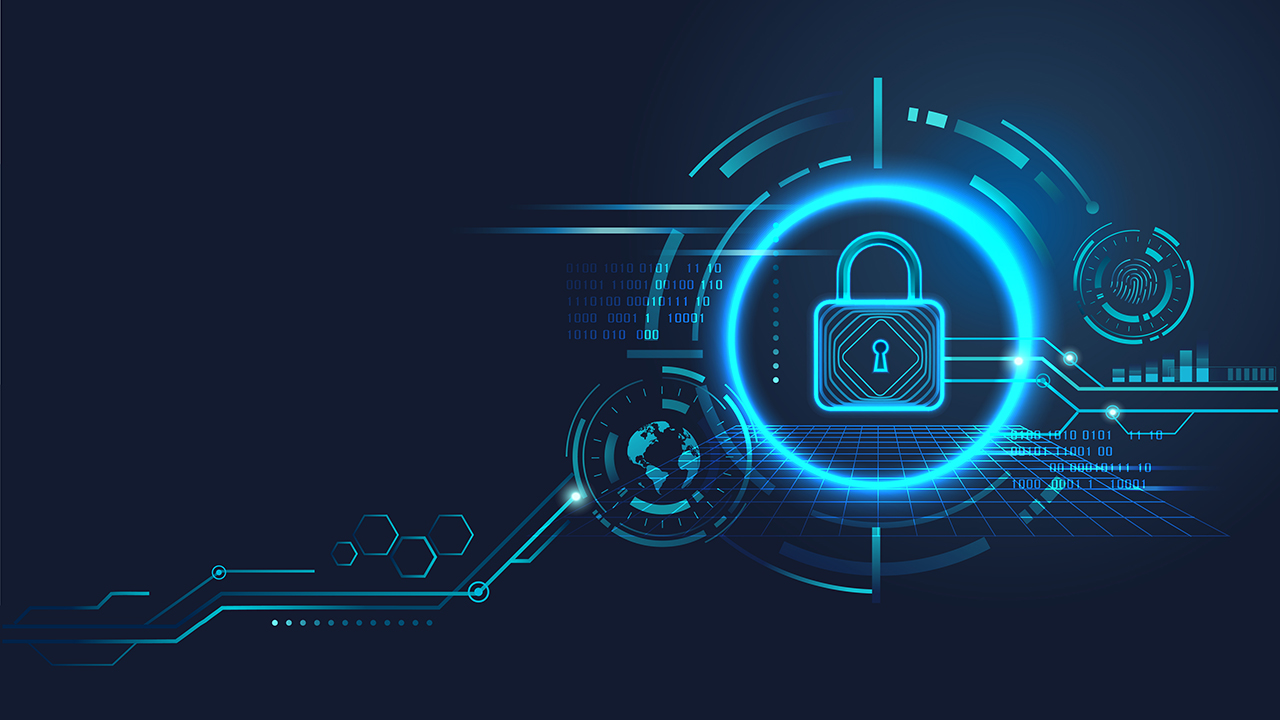Managing assets effectively is essential for modern businesses to maximize productivity, minimize downtime and optimize resource allocation — but it has always been a difficult and time-consuming task involving many manual processes. Today, the IoT is completely changing the way we monitor and maintain these physical assets, making IoT asset management a reality.
How? By delivering the tools, technology, and network connectivity to enable the rapid processing needed for automation, and the data insights required for monitoring any asset, anywhere. And it's all here today.
In this article, we’ll discuss the benefits of IoT in asset management and how it works. We will also discuss some IoT implementation challenges and security concerns, and their solutions.
What Is Asset Management and Monitoring?
Asset management and monitoring involve managing and monitoring an organization's assets throughout their lifespan. These assets may be physical — machinery, equipment, or vehicles. They could also be digital — software licenses and even domain names.
Acquiring, registering, maintaining, tracking and disposing of assets are all asset management tasks. The goal is to maximize asset utilization, reduce downtime, control costs and comply with regulations. It also involves strategies to increase an asset's lifespan and value to the company.
Asset monitoring, on the other hand, involves real-time asset data observation and analysis. Businesses use technologies like sensors, Internet of Things (IoT) devices and advanced analytics to improve monitoring. They provide valuable data for decision-making, predictive maintenance and process optimization.
How Do IoT Devices Support Device Monitoring and Control?
IoT devices are physical objects with sensors, software and connectivity that collect and share data online. These devices include household appliances, wearable tech, industrial machinery, and smart infrastructure. IoT devices gather data, share it with other devices or systems and act on it, enabling operators to monitor and manage devices remotely.
The working principle of IoT devices involves these essential components:
- Sensors: IoT devices typically integrate sensors, such as temperature, motion, humidity, GPS, and more. These sensors monitor the device's surroundings and collect data which is routed by wireless communication modules and gateways to a cloud interface or datacenter for analysis, insights, decision making and process automation.
- Connectivity: IoT devices connect wirelessly via Wi-Fi, Bluetooth, or cellular networks. This lets them send the collected data to other devices, cloud platforms, or central servers.
- Data processing and communication: The IoT device processes and packages data collected by sensors and smart devices at the network edge, and sends it to a data center, another device, or a cloud-based system for processing, data visualization and automation tasks.
- Cloud-based remote management: Sophisticated remote monitoring and managements systems available today — like Digi Remote Manager® — collect data from deployed devices, and provide visibility and control across the network. The cloud-based platform analyzes and manages the data, sends alerts to key personnel, and enables security monitoring and even out-of-band management of remote devices.
What Is the Role of IoT in Asset Management?
By 2030, the IoT-based asset tracking and monitoring market will be worth $8.5 billion. The Compound Annual Growth Rate (CAGR) for this market is 8.74% between 2022 and 2030. These figures show the growing trend of industries adopting IoT technologies to improve asset management and real-time monitoring.
4cda.png)
Source: Precedence Research
The number of asset trackers is expected to reach 267 million worldwide by 2027. This increase shows that businesses in manufacturing, logistics, transportation and supply chain management recognize the value of IoT-based tracking solutions.
How do IoT-based asset management and monitoring differ from conventional systems?
IoT devices have improved the conventional method of managing assets. It offers many more features than conventional solutions. These cutting-edge smart solutions combine processes and workflows to create a unified strategic system.
It offers valuable business intelligence with alerts, real-time data analysis and asset edge control. Other features include real-time visibility, predictive maintenance and automated workflows.

Source: Birlasoft
- Remote asset tracking: IoT's cloud-based technology gives employees remote access to assets.
- Asset health and condition monitoring: IoT helps assess asset health by analyzing health indicators and risks. This enables preventive measures and asset optimization.
- Asset lifecycle management: IoT allows asset managers to track their portfolio assets throughout their lifecycle, maximizing profitability.
- Asset workflow automation: IoT-driven solutions automate repetitive tasks and speed up workflows. This reduces errors and increases team productivity.
- Predictive asset maintenance: This involves using IoT data to predict when assets will fail. It allows organizations to take preventive measures to reduce shutdowns and downtime. The system often uses cached data from previous asset performance assessments to optimize predictive maintenance schedules.
What Are the Benefits of IoT in Asset Management?
Beyond its superiority to conventional systems, IoT has more benefits in asset management, including:
1. Real-time asset monitoring: IoT sensors continuously gather information on the usage, performance and health of assets. Asset managers can make proactive decisions and intervene quickly with this information.
2. Overall Equipment Effectiveness (OEE): This is a major benefit of IoT in asset management. OEE measures equipment and asset efficiency in manufacturing and production. It considers three factors: availability, performance and quality.
Real-time asset performance, condition and usage data from IoT devices improve OEE.

Source: Birlasoft
3. Improved security and safety: IoT helps asset managers implement access controls and real-time surveillance. IoT devices can also monitor environmental and safety parameters to prevent hazards.
4. Integration with asset management systems: IoT technologies seamlessly integrate with existing asset management systems, such as Computerized Maintenance Management Systems (CMMS) or Enterprise Asset Management (EAM) software. This integration simplifies data management and improves asset visibility.
How to Make Use of IoT in Asset Management

Source: Intuz
IoT-enabled asset management and monitoring solutions use cloud-based platforms, data analytics, IoT devices, sensors and connectivity to provide real-time asset performance and condition insights.
Here's how it typically works:
- IoT devices and sensors: The solution involves installing IoT devices and sensors on assets to monitor temperature, vibration, location, usage and other parameters. These devices can be integrated into assets or attached directly to them.
- Data collection and transmission: IoT devices continuously collect sensor data. Wireless technologies like Wi-Fi, Bluetooth, Zigbee and cellular networks send this data to a central cloud platform.
- Cloud-based platform: A cloud-based platform stores and processes device data. The cloud platform serves as a centralized repository for asset-related information. For example, developers using Platform.sh can easily build, test, and iterate their applications locally before sending them to the cloud.
- Data analytics and processing: Advanced analytics tools and algorithms process the data. This analysis identifies asset performance and health patterns, trends, anomalies and issues.
- Real-time monitoring and alerts: Asset managers and operators can access asset status, location and performance metrics from anywhere with the cloud platform's real-time monitoring capabilities. Features like Chrome Headless can automate web-based interactions with asset-monitoring dashboards. This streamlines the monitoring process for asset managers.
- Predictive maintenance: The solution analyzes historical data and patterns to predict asset maintenance. Predictive maintenance reduces downtime and unexpected failures and increases asset lifespan.
- Asset visualization and reporting: The IoT-enabled solution creates simple dashboards and reports from its data. These visualizations give asset managers actionable insights. Features like Drupal Headless let developers create real-time data visualization front-end interfaces for IoT devices.
- Integration with enterprise systems: The IoT-based asset management solution can support the integration of legacy systems like Enterprise Resource Planning (ERP) and Computerized Maintenance Management Systems (CMMS) to create a comprehensive view of asset-related data.
- Remote control and automation: IoT-enabled asset management solutions can allow operators to remotely adjust settings, perform diagnostics, or trigger actions.
IoT Asset Management Use Cases

IoT asset management has many applications across industries, even including smart cities and buildings. The following use cases demonstrate how IoT manages and monitors assets:
- Fleet management: IoT-enabled asset tracking monitors vehicle location, fuel consumption, and driver behavior. This data optimizes routes, lowers fuel costs, improves driver safety and boosts fleet efficiency.
- Warehouse management: IoT sensors track inventory levels, stock movement and storage optimization in warehouses. This prevents stockouts, lowers inventory costs and streamlines order fulfillment.
- Heavy equipment monitoring: IoT sensors on heavy machinery track location and usage in real time. This information helps manage large construction or mining fleets efficiently.
- Aircraft maintenance: IoT devices on aircraft components monitor health and performance. They enable predictive maintenance and reduce downtime.
Metrics to Track the Efficacy of IoT-based Asset Management
Tracking key performance metrics is crucial for evaluating IoT-based asset management solutions. Monitor the following metrics:
- Asset downtime and uptime: Track the amount of time assets are operational (uptime) and non-functional (downtime). IoT-enabled asset management should reduce downtime and increase uptime, improving asset utilization and productivity.
- Mean time between failures (MTBF): This metric calculates the average time between asset failures. Predictive maintenance and timely repairs increase MTBF, while a decrease indicates asset health and performance issues.
- OEE: IoT-driven asset management should increase OEE to boost productivity and reduce waste.
- ROI: Calculate the financial impact of IoT-based asset management. Compare the solution's costs to its benefits, such as reduced maintenance costs, increased productivity and asset lifespan.
IoT – Transforming Asset Management
IoT has transformed asset management, helping companies improve efficiency, reduce downtime, and make data-driven decisions. IoT-based solutions streamline workflows with real-time tracking, predictive maintenance, and automation.
Asset management applications will grow as the IoT market grows, boosting productivity and cost savings across industries. However, interoperability and security issues require careful planning and robust implementation measures.
It’s crucial to stay on top of emerging trends that could impact your strategy. For example, developments in machine learning could see AI-powered IoT systems further enhance capabilities.
Managers will more easily be able to extract real-time insights to be applied in various industries, from medicine to AI domain management and investment. (Learn about .ai domains.)
Embracing IoT's potential while addressing these challenges will help businesses stay competitive and grow sustainably in the dynamic and interconnected digital era.
Potential Challenges and Security Considerations of IoT Solutions

Addressing these points is essential to maximizing IoT's potential while protecting data, assets, and user privacy.
Challenges:
- Interoperability: Integrating diverse IoT devices and platforms may cause communication and data-sharing issues.
- Scalability: Scaling IoT deployments to manage large amounts of data and devices is difficult and resource-intensive.
- Data privacy: Collecting massive amounts of data raises concerns about privacy, ownership and data protection regulations.
- Power management: IoT devices with limited power sources need efficient power management to operate continuously.
Security considerations:
- Data security: Protecting IoT-generated data from unauthorized access and cyberattacks is essential to data integrity and confidentiality.
- Device security: Strong authentication and encryption of IoT devices prevent unauthorized access and control.
- Firmware updates: Updating IoT device firmware regularly to fix security vulnerabilities and prevent exploits.
- Network security: Securing IoT communication channels and networks prevents data theft and unauthorized access to connected devices.
- Supply chain security: Protecting IoT devices and components throughout the supply chain prevents tampering and malicious insertions.
Today, trusted vendors like Digi are integrating sophisticated security capabilities into IoT solutions, and providing the critical monitoring and management tools required to detect and thwart cyber risks, and keep deployed devices secure and up-to-date.
Digi Solutions for IoT Asset Management
Digi offers a comprehensive list of IoT solutions and services to support your IoT asset management needs:
- The Digi ConnectCore® ecosystem: A suite of embedded development solutions for OEMs to build connected, high-performance products for industrial, manufacturing, medical, retail, and supply chain use cases, with integrated security monitoring and remote management services.
- The Digi XBee® ecosystem: A complete family of wireless communication modules for OEMs to support RF and cellular integration in IoT applications, as well as sensor connectivity and edge computing — with a full suite of tools for development, testing and deployment.
- Digi cellular routers: A full range of cellular solutions for enterprise, industrial and transportation use cases, with the integrated Digi Accelerated Linux operating system (DAL OS), Digi Remote Manager remote monitoring and management platform, and Digi TrustFence® security framework, as well as a suite of value-added services to optimize deployments.
- Digi infrastructure management solutions: An extensive offering of solutions for sensor connectivity, industrial monitoring and control, and out-of-band management.
- Digi Wireless Design Services: A talented team of creative engineers who can take product design and development from concept to manufacturing, and beyond — including ongoing monitoring, management and security services for your deployed devices.
- Digi Professional Services: A team of engineering professionals who can support the planning and deployment of your IoT project — including site surveys, application development, cellular connectivity services, deployment, team training, and ongoing support.
Next Steps
About the Author
 Gregory Batchelor is the Vice President of Growth Marketing at Platform.sh, a unified, enterprise-grade platform for building, running and scaling websites and applications. With over 20 years of experience in the tech sector, including time at companies including Oracle, Cisco and NTT, he has developed a reputation as a marketing and business operations leader. In his spare time, Gregory enjoys spending time with his family, traveling, and playing lots of golf.
Gregory Batchelor is the Vice President of Growth Marketing at Platform.sh, a unified, enterprise-grade platform for building, running and scaling websites and applications. With over 20 years of experience in the tech sector, including time at companies including Oracle, Cisco and NTT, he has developed a reputation as a marketing and business operations leader. In his spare time, Gregory enjoys spending time with his family, traveling, and playing lots of golf.